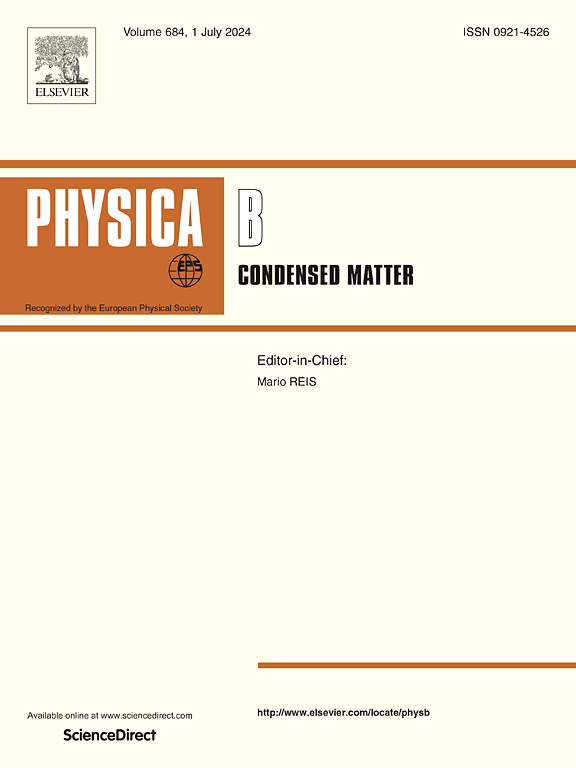ZnSe and Cd0.6 Zn0.4Te for isotype heterojunction (IHJ) for photovoltaic applications
IF 2.8
3区 物理与天体物理
Q2 PHYSICS, CONDENSED MATTER
引用次数: 0
Abstract
Thin films of ZnSe, Cd0.6Zn0.4Te, and Cd0.6Zn0.4Te/ZnSe were thermally deposited on glass and silicon substrates. XRD results confirm that the films are nanocrystalline and have a cubic structure. Linear and nonlinear optical properties of the films were assessed. The evaluated optical band gap (Eg) values for ZnSe, Cd0.6Zn0.4Te, and ZnSe/Cd0.6Zn0.4Te films were 2.95, 1.71, and 1.757 eV, respectively. The electrical study evaluated I-V characteristics, rectification ratios, series and shunt resistance, ideality factor, and barrier height for ZnSe/p-Si, Cd0.6Zn0.4Te/p-Si heterojunctions, and n-Cd0.6Zn0.4Te/n-ZnSe isotype junctions at various temperatures. The ideality factor and barrier height results showed that the Cd0.6Zn0.4Te/p-Si device outperformed the ZnSe/p-Si device in terms of electrical conductivity as temperature increased. The novelty in this study is that the fabrication of the n-ZnSe/n-Cd0.6Zn0.4Te isotype junction has a higher current value by about 3 orders of magnitude than the constructions of ZnSe/p-Si and Cd0.6Zn0.4Te/p-Si heterojunctions. Furthermore, the significant decrement in its electrical parameters causes an enhancement in its electrical conductivity compared with other formed heterojunctions at room temperature.
求助全文
约1分钟内获得全文
求助全文
来源期刊

Physica B-condensed Matter
物理-物理:凝聚态物理
CiteScore
4.90
自引率
7.10%
发文量
703
审稿时长
44 days
期刊介绍:
Physica B: Condensed Matter comprises all condensed matter and material physics that involve theoretical, computational and experimental work.
Papers should contain further developments and a proper discussion on the physics of experimental or theoretical results in one of the following areas:
-Magnetism
-Materials physics
-Nanostructures and nanomaterials
-Optics and optical materials
-Quantum materials
-Semiconductors
-Strongly correlated systems
-Superconductivity
-Surfaces and interfaces
 求助内容:
求助内容: 应助结果提醒方式:
应助结果提醒方式:


